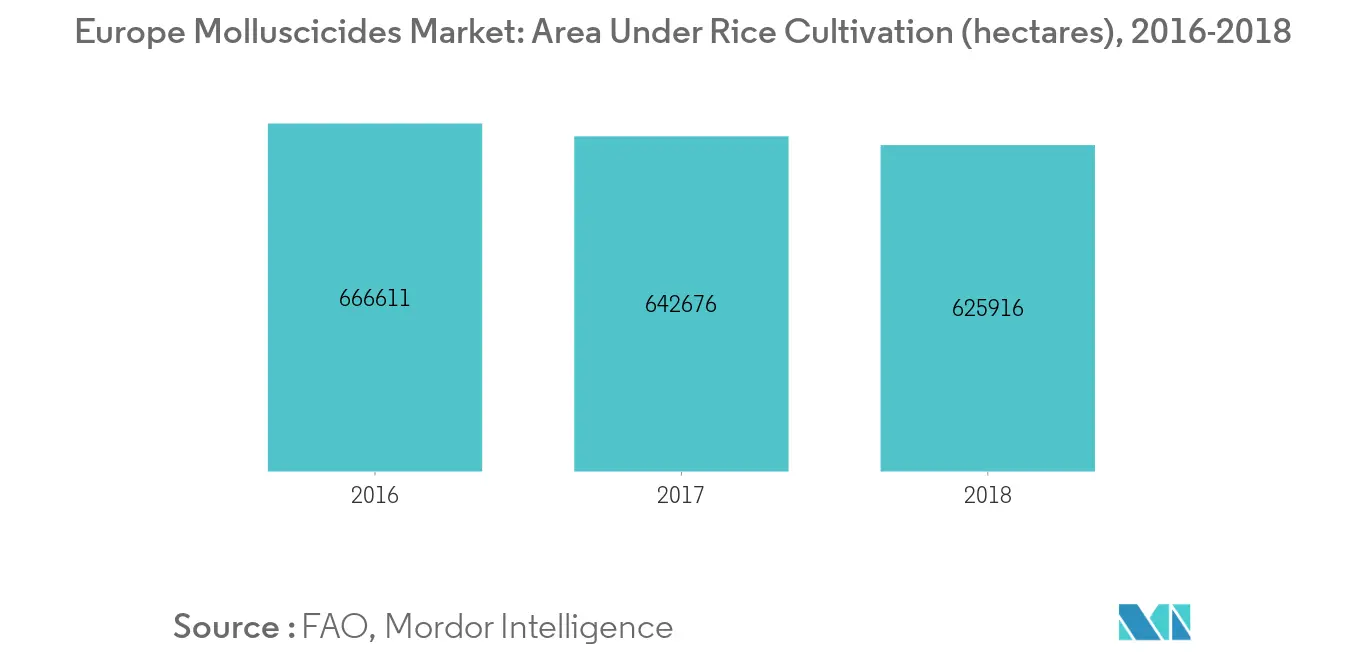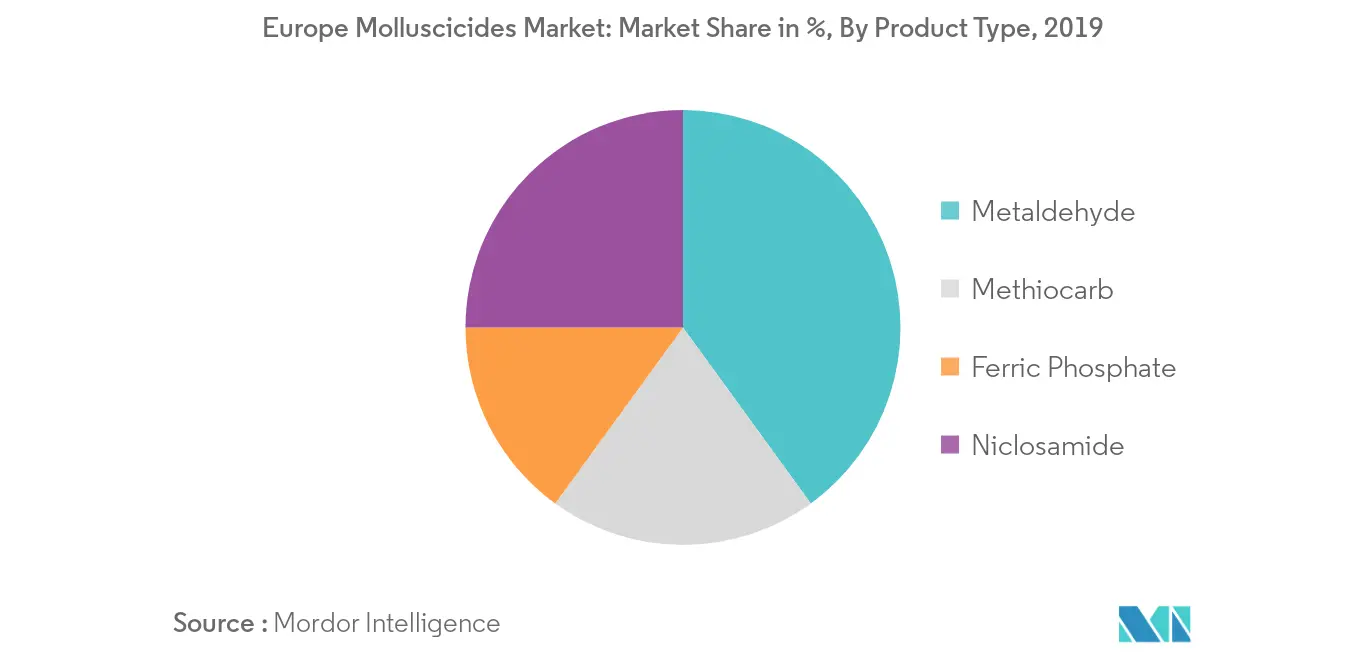Market Trends of Europe Molluscicides Industry
This section covers the major market trends shaping the Europe Molluscicides Market according to our research experts:
Rice is Majorly Affected by Apple Snails
Rice is grown in several Mediterranean countries in Europe, which provide around two-thirds of rice consumption within the EU. However, most varieties are severely damaged by apple snails. In 2018, The EU-funded NEURICE project is developing salt-tolerant rice varieties for commercial use that will prevent the spread of the apple snail.
This exotic, invasive pest destroys rice seedlings and is detrimental to biodiversity in freshwater wetlands. Therefore the government of Europe taking several steps to control the mollusks in rice production within the region. According to FAO, the area under rice cultivation accounts for 625,916 hectares in 2018. Increasing area under rice cultivation coupled with government support will boost Europe molluscicides market.

Metaldehyde Dominant the Market
Metaldehyde is one of the major active ingredients in molluscicides. This active ingredient is then formulated by a number of suppliers into granular bait pellets available under a range of trade names such as Deadline. Cekumeta, Metarex, Metason, and Hardy). In Europe, it is used by arable farmers to protect crops such as cereals, oilseed rape, and potatoes. The effective control of mollusks is a serious concern, as, without the use of such a pesticide, there would be high losses of the valuable crops. For instance, in the UK it has been estimated that a lack of effective slug control products could make a loss of USD 110 million a year in crop production.

